In an upfront interaction, Shrikant Shinde, Founder and Chief Executive Officer of GoGoA1 shared with Prateek Pardeshi the company’s disruptive plans and EV aspirations.
Q. Give us an insight into the business of EV conversion kits. How did GoGoA1 handle Covid-19?
A.We started working in the supply and manufacturing of electric components industry in 2011. There was no awareness on electric vehicles, so we started off with building an e-rickshaw. Delhi had e-rickshaws in ‘custom clearance’, therefore we ordered it in Mumbai, but then we needed certification as it was mandatory. For that certification, the government didn’t have norms in place. They couldn’t test the vehicle, so we had to send back the container. On reaching there a 60 per cent duty was levied. We had to drop that and we faced an estimated loss of Rs.70 lakh and that was a major setback.
We then ordered individual components, which were majorly focused on parts needed by engineering students across India for their projects. Till 2015 we continued this business and had a good hold on the establishment of components. We had sourced components keeping in mind the students from an engineering and IIT background and their projects. We had to either order such products or had to develop them. We eventually formed a hub for all electric vehicle components. After such a huge demand we started going online in 2015, and we started promoting and expanding GoGoA1.
We got our hands on a new product called a self balancing scooter, something very similar to hoverboard or segways. We then started importing them. We saw the potential of this product and opened a manufacturing facility in China. The company existing there had a complete 100 per cent ownership. We started manufacturing hoverboards and segways there with a business model catering to domestic and international markets as well. We made good business in these three years and the losses were recovered.
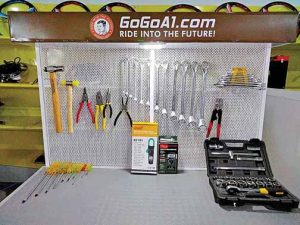 In 2018, we started with motor manufacturing in-house in China. Further we started an establishment in India, in 2019. We also ventured in the education sector via GoGoA1 foundation wherein we tied-up with universities, encouraged startups, and started supplying components to entrepreneurs and OEMs alike. Our major focus was on manufacturing drivetrain for EVs. My expertise is in motor manufacturing, and I had to bring in a variety of motors. Thus we handed over the China plant to our other team, and started collaborating with other well known brands such as YM motors. We work as a collaboration in the domestic market, and we manufacture components needed by India and import if few parts are needed. In 2019, we started manufacturing major components of EVs in India, such as chassis and wiring harnesses. Recently we started planning on manufacturing motors here in India, and we expect that work to start by December 2021. Motors and controllers are the main parts, and we already have a good will in this sector.
In 2018, we started with motor manufacturing in-house in China. Further we started an establishment in India, in 2019. We also ventured in the education sector via GoGoA1 foundation wherein we tied-up with universities, encouraged startups, and started supplying components to entrepreneurs and OEMs alike. Our major focus was on manufacturing drivetrain for EVs. My expertise is in motor manufacturing, and I had to bring in a variety of motors. Thus we handed over the China plant to our other team, and started collaborating with other well known brands such as YM motors. We work as a collaboration in the domestic market, and we manufacture components needed by India and import if few parts are needed. In 2019, we started manufacturing major components of EVs in India, such as chassis and wiring harnesses. Recently we started planning on manufacturing motors here in India, and we expect that work to start by December 2021. Motors and controllers are the main parts, and we already have a good will in this sector.
Q. Is there a need to create a greater awareness on EVs in India?
A. There is lack of knowledge on EVs. Government needs to do a lot more too. Even though many industries have the solution they won’t disclose for the fear of losing business. We took the initiative of spreading awareness so we all progress together in this field. If we don’t do it today, some or the other foreign company will get the early mover’s advantage. We have two major revolutions, the engine is replaced by a motor, and the other is the induction motor replaced by magnet motors. In such a transformation phase its necessary to take active initiatives.
Every revolution has a major reason behind it. In every technical revolution when efficiency is increased there is a revolution. Initially we had conventional bulbs now they are replaced with tube lights further replaced by CFL bulbs which are now replaced with LED bulbs. These too will be replaced. Similarly the engine gives 30-35 per cent of efficiency and the motors give 80-85 per cent of efficiency. We see a huge difference in efficiency.
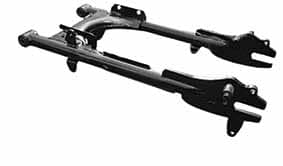 Q. Is the EV industry still at a nascent stage in India?
Q. Is the EV industry still at a nascent stage in India?
A. The phase from 2021 to 2025 will be the establishment phase. There are a lot of experiments going on. In India we are currently facing two major challenges. In India we see every vehicle as a “jeevansathi” whereas in other countries vehicles are used for two to three years just like a toy. In India we use the vehicle for over 15 years then we re-register it and use it for an additional 20-25 years until the spare part availability is a problem. Until we have the spare part availability, the existing model will remain successful in India.
All the components are manufactured or imported. Providing after sales service and spare part availability is a major chunk. You can see many OEMs, almost 80 per cent of them have left the country because they cannot provide after sales service. Auto companies deliver the finished product and the customer is dependent on the dealer for spare part availability. The dealer is dependent on the manufacturing company dependent on imports which in turn rely on a Chinese company. In China, nobody makes spare parts for vehicles which are over three years old.
In this business model the company is not making profit the dealer is not satisfied as well nor the customer is not satisfied. The solution to address all these problems is to have a production line in India and make products using Indian manufactured spare parts. Since EV is a sensitive topic many major players avoid venturing at an early stage as a number of experiments are going on. They might venture in the latter half of the revolution by 2024-2025. So the people who started in 2021 might exit the market by 2025. On that account in India the EV industry is not yet full-fledged. Since it is the very initial stage we focused on the conversion kit. By using conversion kits the vehicle is already in a running condition and the spare parts are already available.
For the main parts such as the hub motor battery, etc the services will be provided by us for all the partners or the franchisees who are associated with GoGoA1. In our franchise market we train them with our expertise and then allow them to open a facility. By doing this we address the solution to the problem of service. We aim to provide a conversion kit for various models in the coming one to one and a half year with an RTO approval.
Q. Tell us about your electric components and rooftop solar charging stations?
A. For EV charging we can rely on solar energy. We have developed some flexible solar panels for charging stations. Solar panels are developed in India. We have also started developing agricultural products for farmers. We have charging stations that are powered by renewable sources such as solar which is easy for them. We have also started a battery swapping system to charge batteries.
Q. You also have a product for farmers ‘Electric Two Wheel all in one Tractor’.
A. For all the products which GoGoA1 provides, we have standardised all the components. We provide the same motor controller and battery, for Splendor and Activa, tractor, three-wheeler and four-wheeler as well. By doing this we don’t need to stock up more inventory as all the spare parts needed are the same.
Components such as the BLDC motor, controllers don’t need maintenance either. We use standards followed by other foreign OEMs. So basically these products don’t need high maintenance but for routine maintenance and problems, it can be locally addressed. To avoid mechanical problems we have incorporated simple designs. We provide franchise options for every pin code. We train them in service and only then allow a franchise. Our main focus is to provide service locally and then the business growth will take place automatically.
Q. In IC engines throttle is directly proportional to fuel consumption. It is the same with EV from the charge perspective. In farming the power requirement is much higher too. Do you see it resulting in a significant energy loss?
A. When we develop a product we aim to use limited capacity of the overall output off the motor. Agricultural products which have a rated capacity of 30A and that tractor on highest load will account for 20-23A current withdrawal. So this helps us to retain the components even if someone uses the EVs roughly or overloads them.
A. We have the design patent and other process patents which will be completed in two to three months. We already have the patent for components even though we have patents for
kits.
Q. How do you align your investments with the returns?
A. Basically our survival was based on the starting components. Once that segment is stable, then we venture into the manufacturing processes. Since 2019 our major focus has been education training for survival and to be able to offer components at a competitive price. As the business grows, volumes will increase allowing us to benefit from economies of scale.
Q. We also came across a recent venture ‘GoGo Motors Indonesia’. What is it all about?
A. We have a new company formation over there with the vision that we are educators, innovators, and accelerators of the 21st century. We want to form a worldwide connection by 2040. Thus we started with China. We are now in India and then we start with Indonesia. The company formation has already been done but due to the pandemic it will kick start only by next year, when we expect operations to commence. Our next aim is the Philippines because if we cover these four countries then we cover almost 60 per cent of the population globally. ACI
Also read, Electric Conversion Kits by GoGoA1



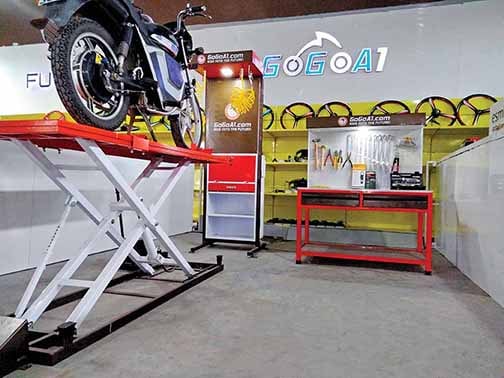
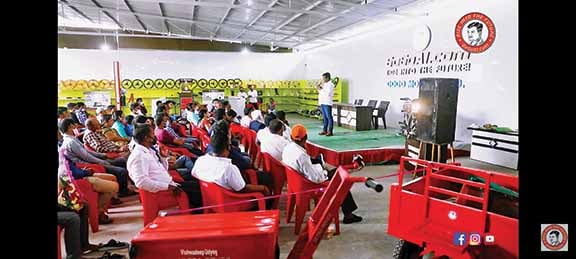
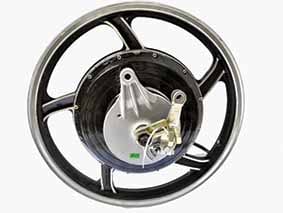
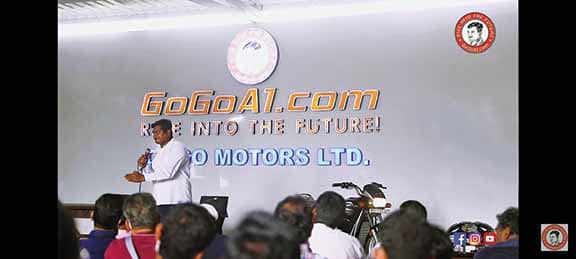



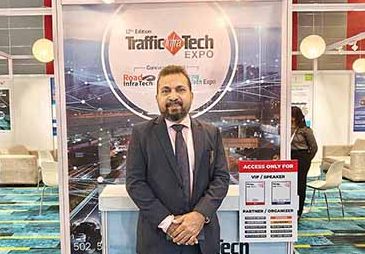




Leave a Reply